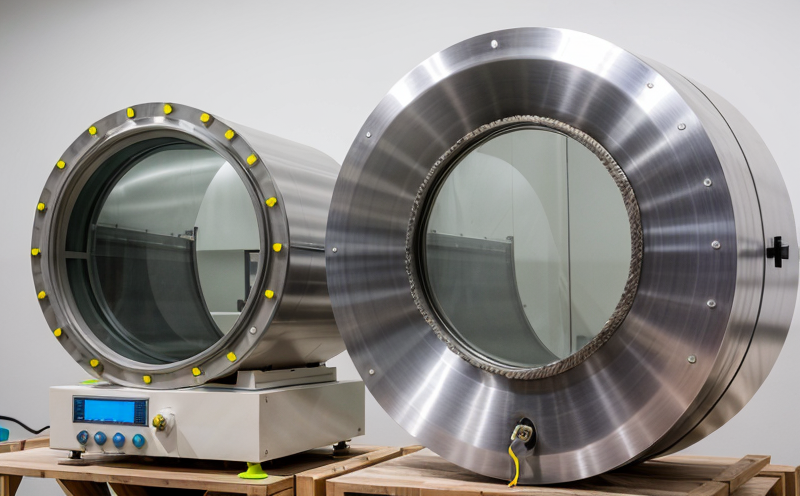ISO 22966 Durability Testing of Shielding Materials in Nuclear Plants
The ISO 22966 standard is specifically designed to evaluate the durability and long-term performance of materials used for radiation shielding in nuclear facilities. This test ensures that the materials can withstand the harsh environmental conditions, including high levels of ionizing radiation, over extended periods. The primary purpose is to verify that these materials remain effective in protecting human health and safety during the operational lifecycle of a nuclear plant.
The testing process involves exposing specimens made from various shielding materials to controlled environments simulating real-world conditions found within nuclear facilities. This includes exposure to gamma rays, neutron fluxes, and other forms of ionizing radiation. The durability is assessed by monitoring changes in material properties such as density, thickness, chemical composition, and mechanical strength.
The standard also specifies the use of advanced analytical techniques like X-ray diffraction (XRD), scanning electron microscopy (SEM), and Fourier-transform infrared spectroscopy (FTIR) to monitor changes over time. These tests help ensure that any degradation or alteration in material properties does not compromise safety standards.
Understanding the long-term behavior of shielding materials is crucial for the design and maintenance of nuclear facilities. By adhering to ISO 22966, laboratories can provide reliable data on material performance under actual operational conditions, which is essential for regulatory compliance and ensuring public safety.
Industry Applications
The ISO 22966 durability testing of shielding materials finds application in several critical sectors:
- Nuclear Power Plants: Ensuring the integrity and effectiveness of radiation shields.
- Nuclear Research Facilities: Providing data for material selection and validation.
- Radiation Therapy Centers: Verifying that materials used do not degrade over time, affecting treatment efficacy.
- Defense Industries: Evaluating protective coverings against nuclear threats.
The results of this testing are vital for industries dealing with high-intensity radiation sources to ensure compliance with international standards and maintain operational safety. It is particularly important in environments where the longevity and reliability of materials are paramount, such as within nuclear reactors or storage facilities.
Why Choose This Test
Selecting ISO 22966 durability testing for shielding materials is essential due to its stringent focus on material performance over extended periods. Here are several reasons why this test stands out:
- Regulatory Compliance: Adheres to international standards, ensuring compliance with legal and safety requirements.
- Predictive Performance: Provides insights into the long-term behavior of materials under real-world conditions.
- Informed Decision-Making: Helps in selecting appropriate materials that meet both performance and durability expectations.
- Safety Assurance: Ensures that materials do not degrade to a point where they compromise safety standards.
This test is particularly beneficial for organizations involved in the design, manufacturing, and maintenance of nuclear facilities. By choosing this service, you invest in long-term safety and operational reliability.
Use Cases and Application Examples
| Use Case | Description |
|---|---|
| Nuclear Reactor Core Protection | Evaluating the durability of materials used to shield the core from radiation. |
| Radiation Therapy Facility Design | Selecting appropriate shielding materials for new facilities based on long-term performance data. |
| Storage Facilities | Assessing the integrity of materials used in storage containers over extended periods. |
| Nuclear Research Laboratories | Monitoring material changes to ensure they remain effective over time. |
- Material Selection: Helps in selecting materials that have proven durability and effectiveness under high radiation levels.
- Operational Safety: Ensures that the chosen materials do not degrade, thus maintaining safety standards over time.
- Risk Mitigation: Identifies potential risks associated with material degradation early on in the lifecycle of a facility.





